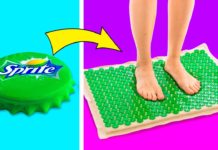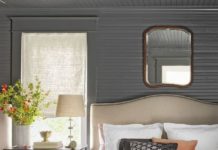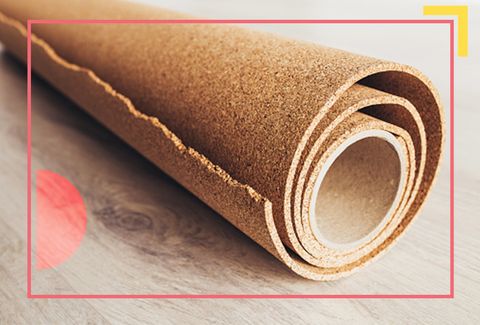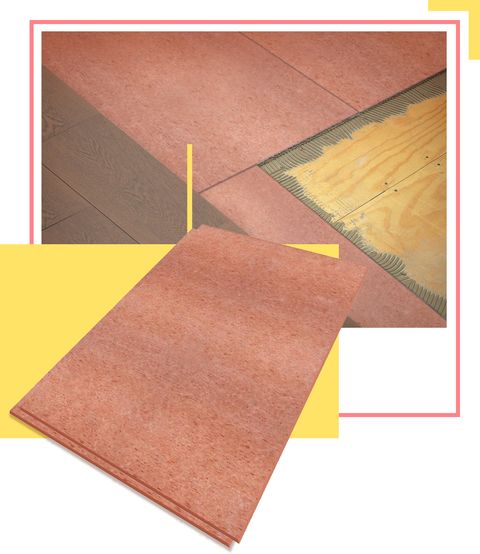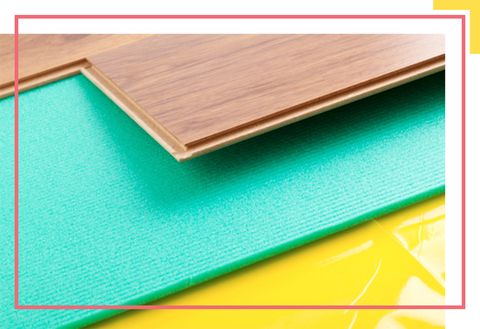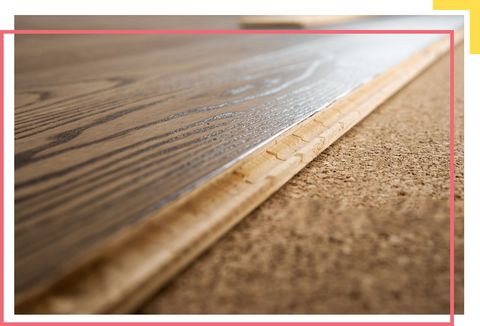If there’s one element of flooring to consider an indispensable ally, it’s underlayment. A thin layer of material that runs between your visible flooring (hardwood, vinyl, tile, you name it) and the subfloor, it’s a hidden problem solver that can address several unexpected flooring issues. Whether you’re counting on it to create a sturdy, level surface for flooring, keep potential moisture damage at bay, reduce noise or all of the above, there’s an underlayment material out there suited specifically to your project, and it can be found at The Home Depot.
Underlayment is the barrier between flooring and subfloor
Underlayment is made from both “hard” and “soft” materials, which are used in different instances. “Hard” materials, like plywood and cement “backer” board, attach to the subfloor itself and are best for flooring types like tile. “Soft” materials, like foam, fiber and cork, work frequently with “floating” floor applications — including luxury vinyl, engineered hardwood and laminate — and aren’t attached to the subfloor directly.
The manufacturer will likely point you in the right direction as to what you need, so make sure to double check their recommendations. What’s more, many newer models of luxury vinyl and laminate floors come equipped with the underlayment already built-in, making it more DIY-friendly with no extra step necessary.
Underlayment makes things smooth and steady
Underlayment’s primary purpose is to create the smoothest, most supportive surface possible for visible flooring, and usually maxes out at about ¼” to ½” in thickness. This point is particularly important in situations where the subfloor isn’t exactly flat, like in older homes or fixer-uppers, and will ensure the durability and comfort of flooring as it inevitably responds to shifts over time.
It keeps things dry as a bone
No one wants mildew and mold building up beneath a floor’s surface, and without underlayment, it’s a major risk in many rooms of the home, especially basements. In any area where humidity tends to run high, a moisture-resistant underlayment — like pre-treated backerboard — will help keep water vapor from potentially damaging your freshly laid engineered hardwood or laminate, which can cause it to warp and buckle.
It helps minimize noise
If noise travels further in your house than you’d like, underlayment with noise-reduction properties should be on your radar. There are several rating systems that test flooring acoustics for evidence on how they stand up against foot fall, blaring TVs and everything in between. But when it comes to underlayment, the systems test known as the Delta IIC is your best resource, which specifically helps determine how effective different types of underlayment are when it comes to canceling out noise.
The higher the Delta IIC score, the greater the degree of noise cancellation (measured in decibels) that the sound-reduction underlayment has added. Underlayment made from felt, rubber or recycled fibers are often used to great effect here, and are helpful in any sort of high-traffic area, not just in an at-home recording studio. Bonus: underlayment that absorbs sound can often be good at trapping heat, helping floors retain warmth for longer when temperatures take a downward turn.
Consider eco-friendly cork
It might run on the pricier side, but cork is an eco-friendly, naturally bug repellant, hypoallergenic and sound-absorbing underlayment option for homeowners committed to a greener lifestyle. Cork is also an excellent energy conductor, so it’s a good option if you have radiant heat.
Just don’t use it in any area that’s prone to dampness: even with a moisture barrier, cork’s porous nature means it won’t perform as well under those conditions.




